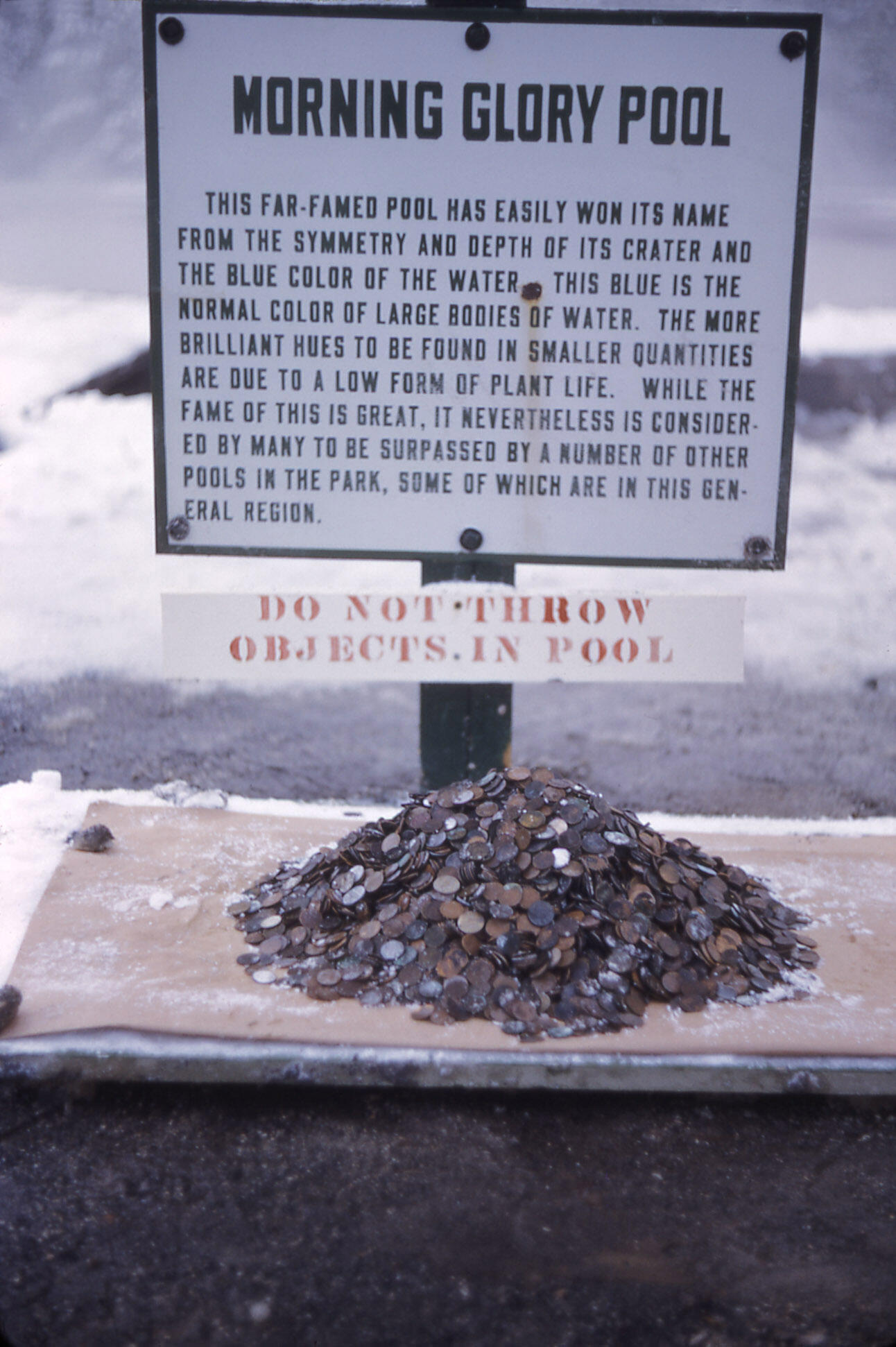Morning Glory Pool, a hot spring that quietly bubbles in Yellowstone National Park, is famous for its dazzling display of colors, starting with blue and green in its center, before bleeding into yellows and reddish oranges at its edge. As beautiful as it might look, its rainbow-like appearance is largely due to contamination from human activity.
The geothermal pool was named in the 1880s after the purplish-blue flower, owing to its sapphire coloration. Historical accounts and early photographs from the 19th century attest that it was once almost entirely blue and relatively clear.
However, by the latter half of the 20th century, the hot spring had acquired several new colors, including oranges, yellows, and greens. As explained by the US Geological Survey (USGS), the color change was the result of visitors throwing garbage, coins, and rocks into the hot spring.
The human-caused debris settled along the base of the vent and restricted the flow of hot water into the pool, causing temperatures to drop. The lower temperatures upset the subtle balance of the pool’s ecosystem, allowing certain microbes to thrive and form mats with different colors and textures.

Morning Glory Pool, seen in a historic undated photo (left) and decades later in 1965 after contamination (right).
Image credit: National Park Service photo by Rentchler / National Park Service photo by William Keller (public domain)
A study in 2015 looked into the relationship between the colors of thermal pools at Yellowstone and their microscopic inhabitants, explaining how the varying microbial mats reflect light in different ways to produce different colors on the surface.
Many of Yellowstone’s hot springs have a multicolored appearance but this is primarily because the pools tend to be cooler at their edges, allowing more microbial growth, compared to their high-temperature centers. The Morning Glory Pool is somewhat unique, however, because it’s undergone such a radical tone change within decades.
In the 1970s, rangers realized the depth of the problem at the Morning Glory Pool and decided to clean it out. They partially drained the hot spring of water and dredged as much debris as possible, revealing a wealth of coins that had presumably been flicked in there for “good luck”.
Clean-up efforts were routinely organized over the following decades until 1991 when it became apparent that the original blue color was not returning.
“We found tons, probably thousands of coins. The main park road used to go right by Morning Glory, so that would account for some of the metal parts that looked like car parts chucked into the bottom of the pool,” Jeff Henry, a former Yellowstone ranger who was involved in the 1991 clear-up, recently told the Cowboy State Daily.
“There were a lot of rocks that didn’t belong there, and I think we found some hats that probably had blown off people’s heads and landed in the pool. And they, wisely, didn’t try to retrieve them,” explained Henry.

An old sign and pile of coins in front of Morning Glory Pool in 1950.
Image credit: National Park Service Photograph by Condon (public domain)
The USGS doubts whether the pure blue coloration will ever return, simply noting that only “time will tell.”
While you’d hope the public is more aware about the perils of dumping trash in natural spaces, discarded debris from human visitors still causes headaches for the National Park Service.
Earlier this month, Carlsbad Caverns National Park in New Mexico put out a warning after a guest left a bag of Cheetos deep within the cave. Left to fester in the humid environment, the bag of cheesy snacks became the perfect setting to host microbial life and fungi, sending a mini shockwave through the cavern’s microbial ecosystem.
Source Link: Yellowstone's Morning Glory Pool Is Only Rainbow-Colored Because Of Trash